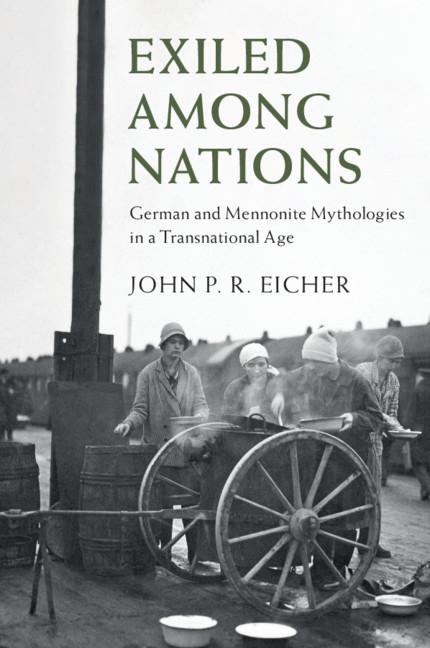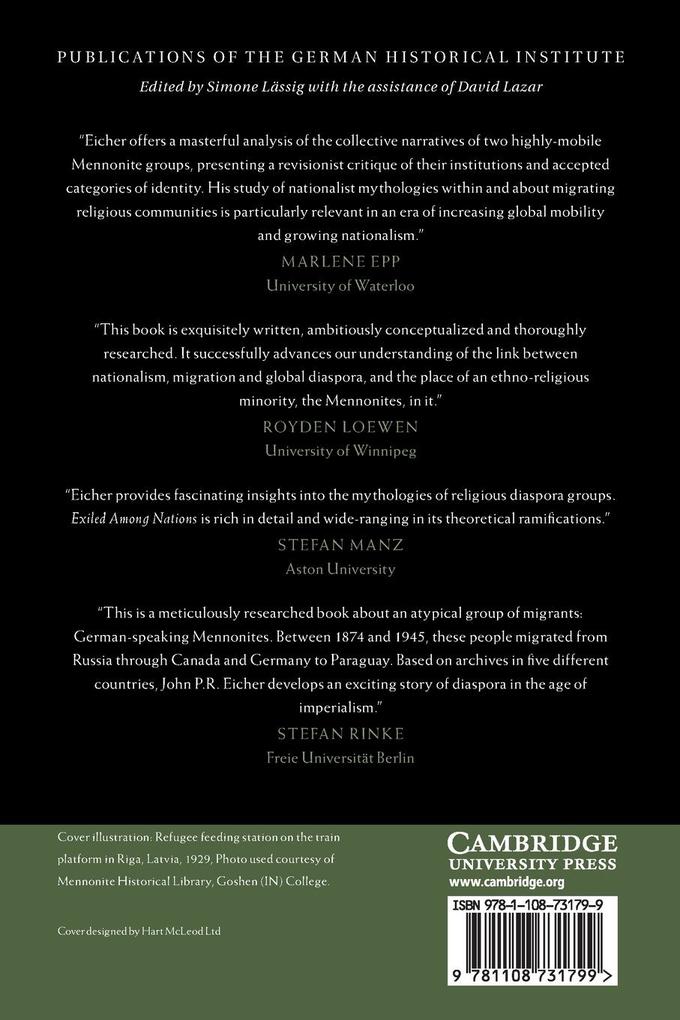
Zustellung: Di, 08.07. - Fr, 11.07.
Versand in 5 Tagen
VersandkostenfreiBestellen & in Filiale abholen:
How do migrants and refugees fashion group identities in the modern world? Following two communities of German-speaking Mennonites across four continents between 1870 and 1945, this transnational study explores how religious nomads selectively engaged with nationalism to secure practical objectives and create local mythologies.
Inhaltsverzeichnis
Introduction; 1. No lasting city (1870-1930); 2. A sort of homecoming (1929-1931); 3. Troubled tribes in the promised land (1930-1939); 4. Mennonite (di)visions (1930-1939); 5. Peanuts for the Führer (1933-1939); 6. Centrifugal fantasies, centripetal realities (1939-1945); Conclusion.
Produktdetails
Erscheinungsdatum
07. Oktober 2021
Sprache
englisch
Seitenanzahl
360
Autor/Autorin
John P. R. Eicher
Verlag/Hersteller
Produktart
kartoniert
Gewicht
522 g
Größe (L/B/H)
229/152/19 mm
ISBN
9781108731799
Entdecken Sie mehr
Bewertungen
0 Bewertungen
Es wurden noch keine Bewertungen abgegeben. Schreiben Sie die erste Bewertung zu "Exiled Among Nations" und helfen Sie damit anderen bei der Kaufentscheidung.










